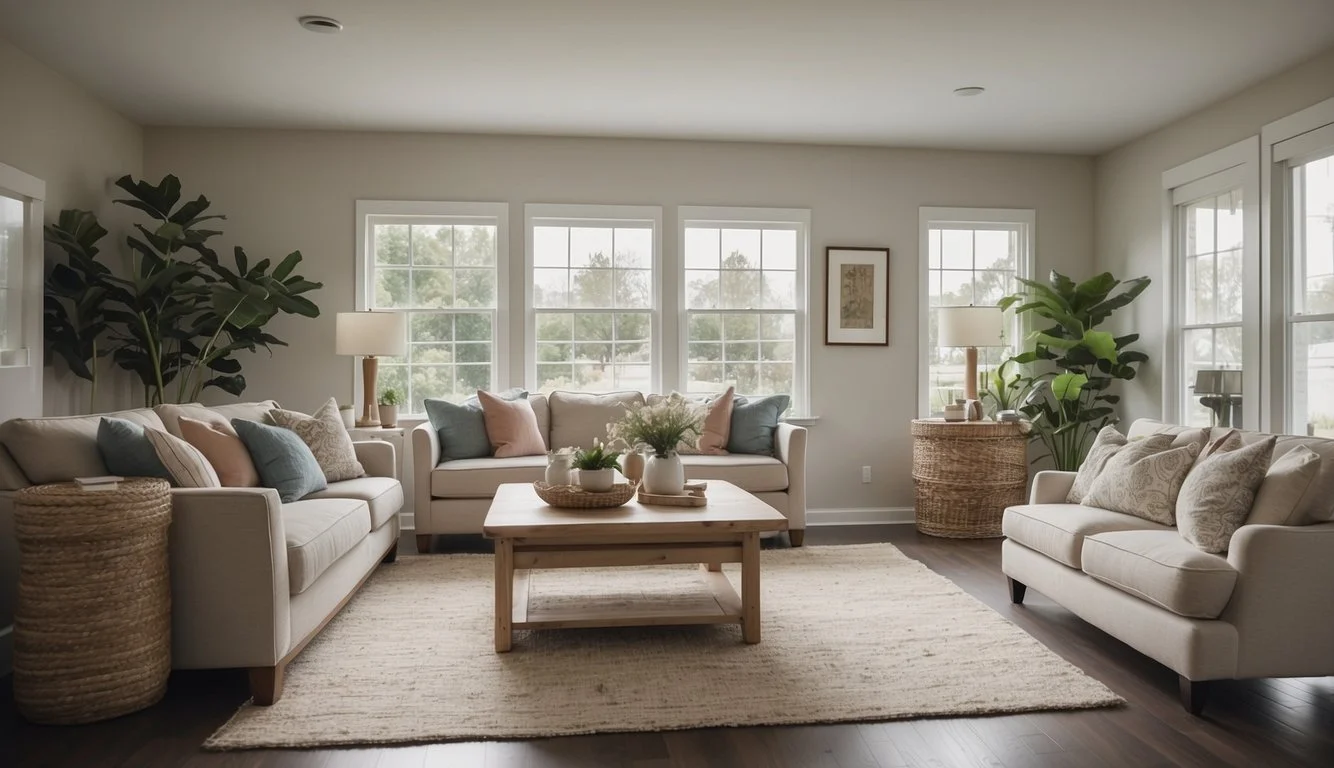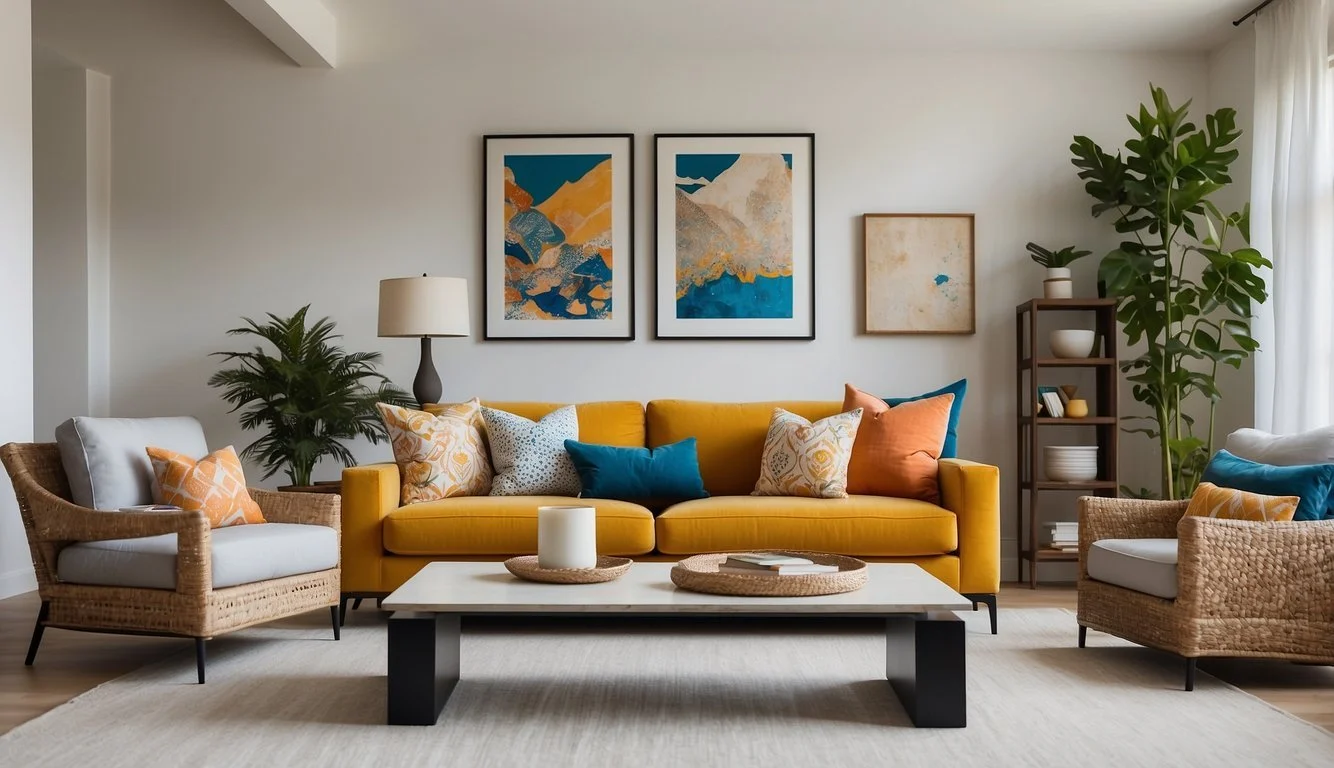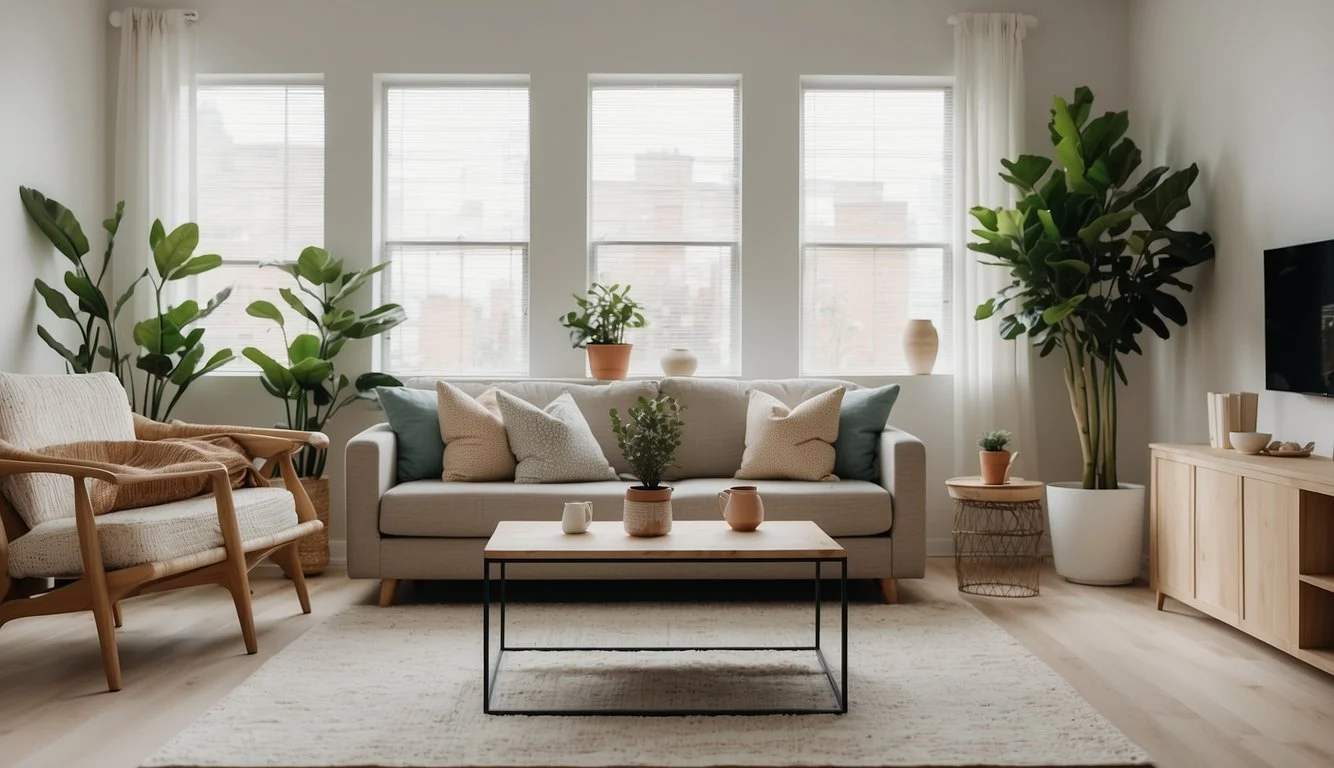Staging Your Austin Home for Sale
Expert Tips for a Swift and Lucrative Move
Selling your home in Austin requires more than just listing it on the market; effective staging is a critical component to ensure a quick and profitable exit. Staging a home makes it more attractive to potential buyers by highlighting its best features and creating a welcoming environment, which can result in offers that are 5% to 15% above the listing price. In a competitive real estate market like Austin, staging can be the difference between a swift sale and a prolonged listing.
Engaging with a real estate agent experienced in the Austin market can provide invaluable insights and resources for staging your home. They understand what local buyers are looking for and can recommend professional staging services that significantly boost your property's appeal. Homes that are well-staged not only photograph better but also attract higher bids, leading to quicker sales.
Potential buyers in Austin expect homes to be clean, uncluttered, and aesthetically pleasing. Simple steps like decluttering, making minor repairs, and enhancing visual appeal with modern, neutral decor can make a dramatic difference. Proper staging paints a picture for buyers, allowing them to visualize themselves living in the space, which is crucial in making a lasting impression and securing a favorable offer.
The Significance of Home Staging
Home staging plays a pivotal role in enhancing the attractiveness of a property, creating emotional connections with potential buyers, and increasing its perceived value, which can result in a quicker sale at a higher price.
Enhancing Curb Appeal
First impressions matter immensely when selling a home. Curb appeal is crucial as it sets the tone for what potential buyers can expect inside. Well-manicured lawns, freshly painted exteriors, and clean driveways significantly improve the attractiveness of a home.
Simple landscaping or even adding potted plants can make a substantial difference. According to the National Association of Realtors, homes with strong curb appeal often sell faster and at a higher price. Enhancing curb appeal through professional home staging can be a low-cost investment with a high return.
Creating Emotional Connections with Prospective Buyers
Staging not only highlights a home's strengths but also helps buyers envision themselves living there. By creating inviting and functional spaces, stagers can develop a connection between the home and potential buyers.
Neutral colors, decluttered rooms, and strategically placed furniture appeal to a broad audience. Emotional connection increases the likelihood of a successful sale. Professional stagers understand how to use decor to evoke positive feelings, making it easier for buyers to imagine making memories in the home.
Increasing Perceived Value and ROI
Professional home staging can significantly increase the perceived value of a property. Well-staged homes appear more spacious, well-maintained, and move-in ready. This perception can justify a higher asking price and make buyers more willing to pay it.
According to industry data, staging yields a high return on investment (ROI). Homes that are professionally staged sell for about 6-10% more than non-staged homes. This increase in perceived value, combined with the enhanced marketability, underscores the economic benefits of investing in home staging.
By focusing on these factors, staging serves as a strategic tool to maximize both the appeal and the profitability of a home sale.
Preparing Your Home for the Market
When preparing your Austin home for the market, focus on decluttering, deep cleaning, and depersonalizing your space. These steps will ensure that your home appeals to the broadest range of potential buyers.
Decluttering and Organizing
Creating a clutter-free environment is essential for making your home attractive to buyers. Start by removing unnecessary items from each room. Use storage bins and containers to neatly organize remaining belongings. Consider renting a storage unit if you have excess items that need to be moved out but not discarded.
Sort belongings into categories such as keep, donate, and discard. This helps in making decisions easier and faster. Keep countertops clear, especially in kitchens and bathrooms, to give the impression of more space.
Deep Cleaning Essentials
A home that sparkles is more appealing to potential buyers. Deep clean every corner of your house, including often-overlooked areas like baseboards, window sills, and light fixtures. Pay special attention to kitchens and bathrooms, as these are critical areas that buyers scrutinize closely.
Consider hiring professional cleaners if the job seems overwhelming. Steam clean carpets or replace them if they’re too worn. Ensure that all windows are clean to create a bright and inviting atmosphere.
Depersonalizing Your Space
Depersonalizing helps potential buyers envision themselves in the home. Remove personal items such as family photos, memorabilia, and unique artwork. Replace these with neutral decorations that appeal to a broader audience.
Neutral-colored walls and decor can make the home feel more welcoming and less like someone else’s personal space. Store away items that may not appeal to everyone, like bold furniture pieces or highly personal collections.
By focusing on these areas, sellers can make their homes more attractive to potential buyers, leading to a quicker and more profitable sale.
Design and Decor Strategies for Staging
Effective home staging involves carefully selecting furniture and decor, optimizing lighting, and adding thoughtful accessories. The following strategies will help showcase your property’s strengths and appeal to the widest range of potential buyers.
Selecting the Right Furniture and Layout
Choosing the right furniture and arranging it properly is crucial. Opt for neutral and versatile pieces that can appeal to a broad audience. Avoid overly personal or bold selections.
Prioritize furniture arrangement that maximizes space and enhances natural flow. For example, in the living room, position the sofa and chairs to create a conversational area that highlights space without overcrowding.
In bedrooms, use beds with simple, elegant bedding to convey a sense of comfort and space. Neutral colors and minimalistic designs work best.
Utilizing Lighting and Color
Lighting can dramatically affect a room's appearance. Use natural light as much as possible by opening curtains and blinds. Ensure all light fixtures are functional and use high-wattage bulbs to brighten spaces.
Accent lighting, such as lamps and spotlights, can highlight features and create a welcoming atmosphere.
Choose neutral colors for walls and decor, as they make spaces feel larger and more inviting. Soft whites, beiges, and light grays are excellent choices that allow buyers to imagine their own decor in the space.
Accessorizing and Adding Final Touches
Accessories add personality without overwhelming buyers. Select items like throw pillows, area rugs, and art pieces that complement the neutral palette.
Decluttering is essential; remove personal items and excess décor to create a clean, spacious look.
Plants and fresh flowers can add a touch of life and warmth. Place them strategically in living areas and bathrooms to enhance aesthetics.
Lastly, ensure all surfaces are clean and well-maintained. Buyers will notice the details, so a final deep clean can make a significant difference in appeal.
Staging Key Areas of Your Home
Staging key areas of your home can significantly enhance its appeal, attract potential buyers, and increase the likelihood of receiving higher offers. Focus on creating an inviting atmosphere and showcasing functionality in spaces such as the living room, dining room, bedrooms, kitchen, and bathrooms.
Showcasing the Living Room
The living room should exude comfort and style, serving as a welcoming space where buyers can envision themselves relaxing. Start by cleaning and decluttering to create an open, spacious feel. Arrange furniture to facilitate conversation and flow. Use neutral tones for walls and furniture, adding pops of color with throw pillows and area rugs.
Incorporate potted plants to bring a touch of nature and freshness. Proper lighting is crucial; utilize natural light by keeping window treatments minimal and add lamps for warmth. Highlight focal points like a fireplace with tasteful décor. Remove personal items to help buyers imagine themselves in the space.
Setting the Dining Room Scene
The dining room should showcase both elegance and functionality. A clean, uncluttered table with a simple centerpiece, such as a bowl of fresh fruit or a vase of flowers, can make a strong impression. Use a table runner to add a touch of sophistication.
Ensure the seating arrangement is spacious and inviting. Place a small potted plant or a set of matching dining chairs to reinforce cohesiveness. Adequate lighting, including a chandelier or pendant lights, can make the dining area feel more welcoming. Neutral wall colors and tasteful artwork can complete the look without overwhelming the senses.
Optimizing Bedroom Appeal
Bedrooms should feel like restful sanctuaries. Start with a deep clean and remove excess furniture. Use neutral bedding and soft textures to create a calming atmosphere. Arrange furniture to maximize space and ensure the room feels airy.
Closets should be organized to highlight storage capacity. Add subtle décor such as framed pictures or a small plant on a nightstand. Ensure that natural light is maximized by keeping window treatments light and airy. Personal items should be minimal to help buyers visualize their belongings in the room.
Revitalizing the Kitchen and Bathrooms
Kitchens and bathrooms often make or break a sale. Cleanliness is paramount; ensure all surfaces are spotless and appliances are polished. For the kitchen, a bowl of fresh fruit or a potted herb plant can add a touch of homeliness and function.
Organize countertops to show ample workspace, and consider adding new hardware to cabinets for a fresh look. Bathrooms should be immaculate with clean grout and shiny fixtures. Use white or neutral towels and mats to create a spa-like feel. Adding a new shower curtain and a small potted plant can make the space feel fresh and inviting.
Proper staging of these key areas can significantly impact the sale of your home by making it more attractive to potential buyers.
Marketing Your Staged Home
Successfully marketing a staged home involves leveraging online platforms, hosting open houses or virtual tours, and using professional photography to enhance the property's appeal.
Leveraging Online Platforms and MLS
To maximize visibility, list the staged property on Multiple Listing Services (MLS) and popular real estate websites like Zillow. These platforms attract a wide audience of potential buyers, increasing the likelihood of a quick sale.
Social media channels such as Facebook, Instagram, and Twitter should be used to showcase high-quality images and videos of the staged home. Paid advertisements on these platforms can further boost visibility. Utilizing targeted marketing strategies ensures that the property appears in front of the right audience, making it more efficient.
Effective Use of Open Houses and Virtual Tours
Open houses allow buyers to experience the home in person, creating a lasting impression. Ensure the home is professionally staged before the open house to highlight its best features.
Virtual tours are crucial in today’s market, offering an immersive online experience for those unable to attend in person. Platforms like Matterport provide detailed and interactive 3D walkthroughs. Virtual tours can be shared on social media, real estate websites, and via email marketing campaigns to reach a broader audience.
Role of Professional Photography
High-quality photos are essential for making a strong initial impression online. Professional photographers have the skills to showcase the home's best attributes and create inviting, well-lit images.
Utilize these photos for listings on MLS, Zillow, and other real estate websites. Incorporate these images into all marketing materials, including brochures and social media posts. Well-shot, consistent imagery ensures the property appears attractive and polished, significantly enhancing its marketability.
DIY Staging Versus Hiring Professionals
When preparing your Austin home for sale, deciding whether to stage it yourself or hire a professional is crucial. Each approach has unique benefits and considerations that can affect the timeline and profitability of your sale.
Assessing the Benefits of DIY
DIY home staging offers several advantages, especially for those on a tight budget. The primary benefit is cost-effectiveness; homeowners can save significantly by not hiring a professional. DIY staging allows homeowners to have complete control over the process, enabling them to personalize the staging to match the home's character and appeal to potential buyers.
However, DIY staging requires a time commitment and some knowledge of design principles. Homeowners must research market trends, evaluate their property objectively, and perform necessary updates and repairs. DIY home staging can be rewarding but may not always achieve the polished look that professionals can offer.
Understanding the Advantages of Professional Staging
Hiring a professional stager brings expertise and experience to the table. Professionals have an eye for design and understand what appeals to buyers. They can highlight a home's strengths and downplay its weaknesses, potentially leading to a quicker sale and higher offers.
Professional staging involves an initial consultation, which can range from a one-time assessment to full-service staging. Costs vary significantly, from $1,500 for smaller homes to $10,000 for luxury properties. Though the expense is higher, the investment often pays off by increasing the home's marketability and final sale price, making it a wise choice for many sellers.
Closing the Deal
Closing the deal requires effective negotiation tactics and thorough final preparations to ensure a smooth and successful transaction. Each step is crucial to achieving a quick sale and securing higher offers on a staged home.
Effective Negotiation Tactics
A key to a quick sale and higher offers is knowing how to negotiate effectively. It's important to approach each negotiation with clear objectives and stay flexible. Selling a staged home can give the seller an edge, as the perceived value is often higher. Highlighting the benefits of the staged home during negotiations can attract better offers.
Key Points in Negotiation:
Know Your Bottom Line: Understand the lowest acceptable offer.
Highlight Home Features: Emphasize the unique and well-presented aspects of the home.
Stay Calm and Professional: Maintain a calm demeanor to foster constructive dialogue.
Understand Buyer Motivations: Tailor your approach to meet buyer needs and desires.
Final Preparations Before Sale
Before finalizing the sale, ensure all documents and tasks are in order. This includes preparing a checklist that covers essential paperwork such as the deed, bill of sale, and home inspection reports. Confirm that all necessary legal disclosures are accurate and complete. Addressing all these details beforehand ensures a smooth process on closing day.
Checklist for Final Preparations:
Complete Documentation: Deed, bill of sale, insurance, inspection reports.
Legal Disclosures: Ensure everything is accurate and comprehensive.
Home Inspection: Verify the final inspection outcomes are satisfactory.
Buyer Communication: Keep open lines with the buyer to resolve any last-minute concerns.




